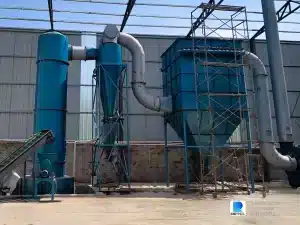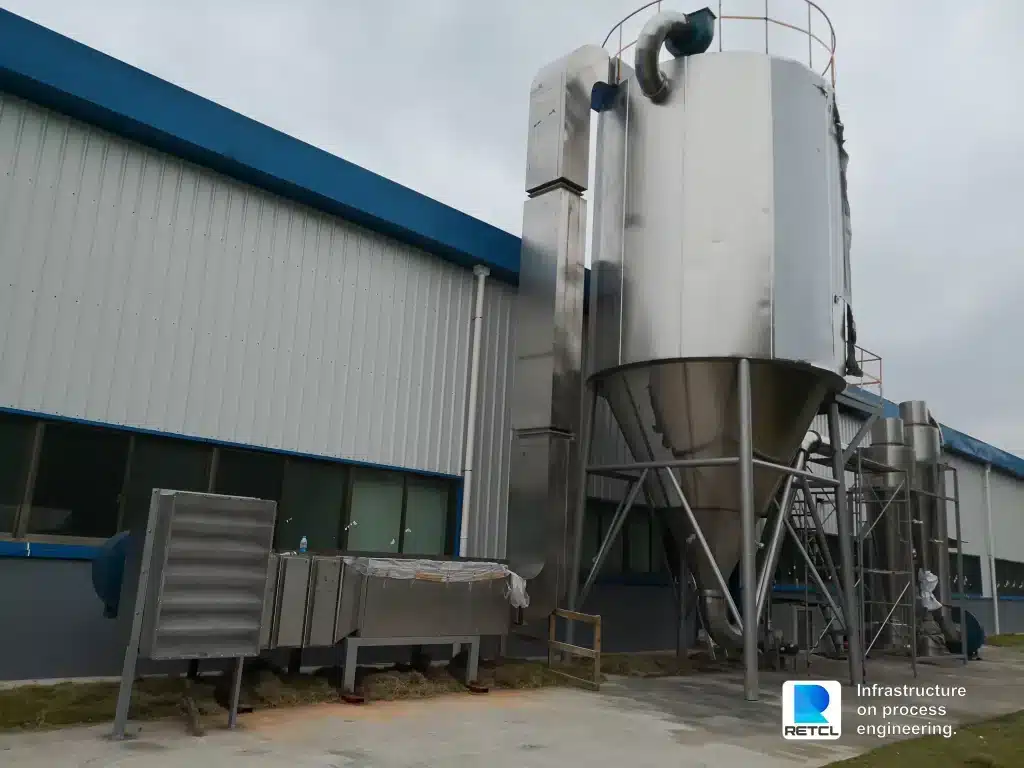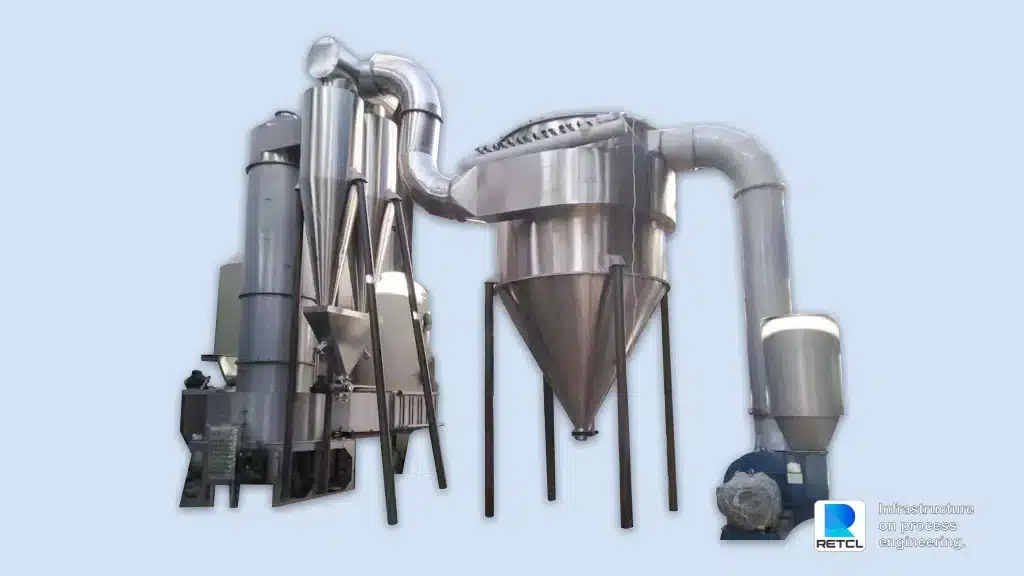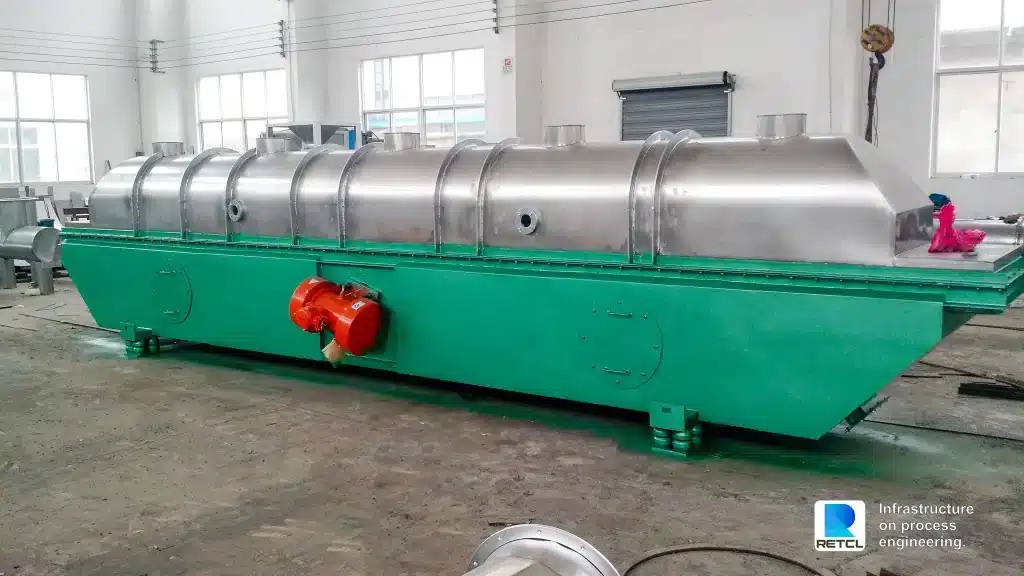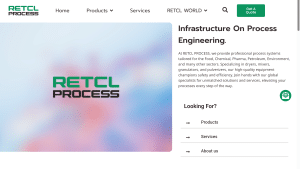Introduction:
In the world of industrial drying, efficiency and quality are paramount. Enter the convection dryer, an innovative technology that utilizes convective drying principles to achieve faster and more effective drying results. In this blog, we will delve into the concept of convective drying, explore the benefits of convection dryers, and highlight their applications across various industries.
Understanding Convective Drying:
Manufacturers widely use convective drying as a method that employs warm air circulation to remove moisture from materials. They create a controlled environment in which they circulate heated air around the material to accelerate moisture evaporation.This method is particularly effective for drying heat-sensitive or delicate materials, as it ensures gentle and uniform drying while minimizing the risk of damage.
Dryers Using Convective Drying Technology:
Many types of industrial dryers use convective drying technology. Some common examples include:
- Fluidized bed dryers – In this type of dryer, the design blows hot air through a bed of material, causing it to become fluidized. Convection then dries the material as the hot air flows through the bed.
- Spray dryers – A spray nozzle atomizes a liquid feed into a fine mist in spray dryers, and then hot air, sprayed into the drying chamber, dries it. As the liquid droplets fall through the drying chamber, convection dries them.
- Flash dryers – Flash dryers typically consist of a cylindrical chamber or duct, a heating source (such as a gas burner or electrical heating element), a fan or blower to circulate the hot air, and an outlet for the dried material. A feeding mechanism introduces the material into the dryer, rapidly heating and drying it with hot air. Flash dryers, offering fast-drying times and high throughput capabilities, often find use in continuous production processes.
- Rotary dryers – This type of dryer consists of a rotating drum, which heats up the material being dried as it tumbles through the drum. The heated air flows through the drum and dries the material through convection.
- Belt dryers – Belt dryers use a conveyor belt to slowly transport material through a drying chamber, where hot air flows over the material and dries it through convection.
- Tray dryers – Designers tailor tray dryers for smaller-scale applications. These dryers circulate hot air through the chamber using a convection system.
The Advantages of Convection Drying:
Convection dryers offer several key advantages over traditional drying methods. Let’s explore some of the benefits that make them a popular choice in industrial applications:
- Faster Drying: Convection dryers utilize forced warm air circulation, allowing for faster moisture removal and reduced drying times compared to other methods. This results in increased productivity and shorter production cycles.
- Improved Efficiency: Designers aim to maximize heat transfer efficiency in the dryers by evenly distributing warm air throughout the drying chamber.This ensures consistent drying across the material, reducing the risk of uneven moisture content or product defects.
- Energy Efficiency: Convection dryers are engineered to optimize energy usage. By utilizing advanced heat exchange systems, they minimize energy wastage, leading to cost savings and environmental benefits.
- Versatile Applications: Convection dryers can be tailored to suit a wide range of materials and industries. From food processing and pharmaceuticals to textiles and chemicals, these dryers provide efficient and reliable drying solutions across various sectors.
Applications of Convection Drying:
The versatility of the convection dryer makes it ideal for numerous industrial applications. Let’s explore how it is utilized in key sectors:
- Food Industry: Convection dryers play a vital role in the food industry, facilitating the drying of fruits, vegetables, grains, and spices. By ensuring controlled drying conditions, these dryers help preserve the nutritional value, flavor, and quality of food products.
- Pharmaceutical Industry: Convection dryers are widely used in the pharmaceutical sector for drying medications, herbs, and herbal extracts. The precise temperature control and gentle drying process offered by convection dryers help maintain the potency and stability of pharmaceutical products.
- Textile Industry: Convection dryers find application in textile manufacturing for drying fabrics, yarns, and fibers. By maintaining consistent and controlled drying conditions, they ensure the proper moisture content and quality of textile materials.
- Chemical Industry: Convection dryers are utilized in the chemical industry for drying various chemicals, pigments, and powders. The efficient and uniform drying achieved by these dryers ensures the desired chemical properties and prevents caking or clumping.
Choosing the Right Convection Drying:
Selecting the appropriate convection dryer for specific drying requirements is crucial. Factors to consider include the material characteristics, desired drying speed, energy efficiency, and capacity. Consulting with industry experts and evaluating the specifications of available convection dryers can help make an informed decision.
Conclusion:
Convection dryers revolutionize the drying process by offering efficiency, precision, and versatility across multiple industries. With their ability to achieve faster drying times, consistent results, and energy efficiency, they have become an essential tool for various manufacturing processes. Whether in the food, pharmaceutical, textile, or chemical industry, convection dryers provide a reliable solution for achieving superior drying performance while maintaining product quality. By harnessing the power of convective drying, businesses can enhance their productivity, reduce costs, and deliver high-quality products to meet the demands of a competitive market. Embracing convection dryers unlocks a world of possibilities, where efficiency and quality converge to drive success in the drying process.
About RETCL Process:
RETCL Process is a leading provider of industrial drying solutions based in Changzhou, Jiangsu Province, China. With a strong commitment to innovation, quality, and customer satisfaction, RETCL Process offers a wide range of customized drying solutions to meet the unique needs of clients across various industries.
Contact:
Mark Gu
Director of Customer Success
RETCL Process
Passionate about enhancing customer experiences and streamlining operations, Mark focuses on building strong relationships, fostering innovation, and leading teams to achieve exceptional service and efficiency.
Email: mark.gu@retcl.com
Phone: +86 18021972660


